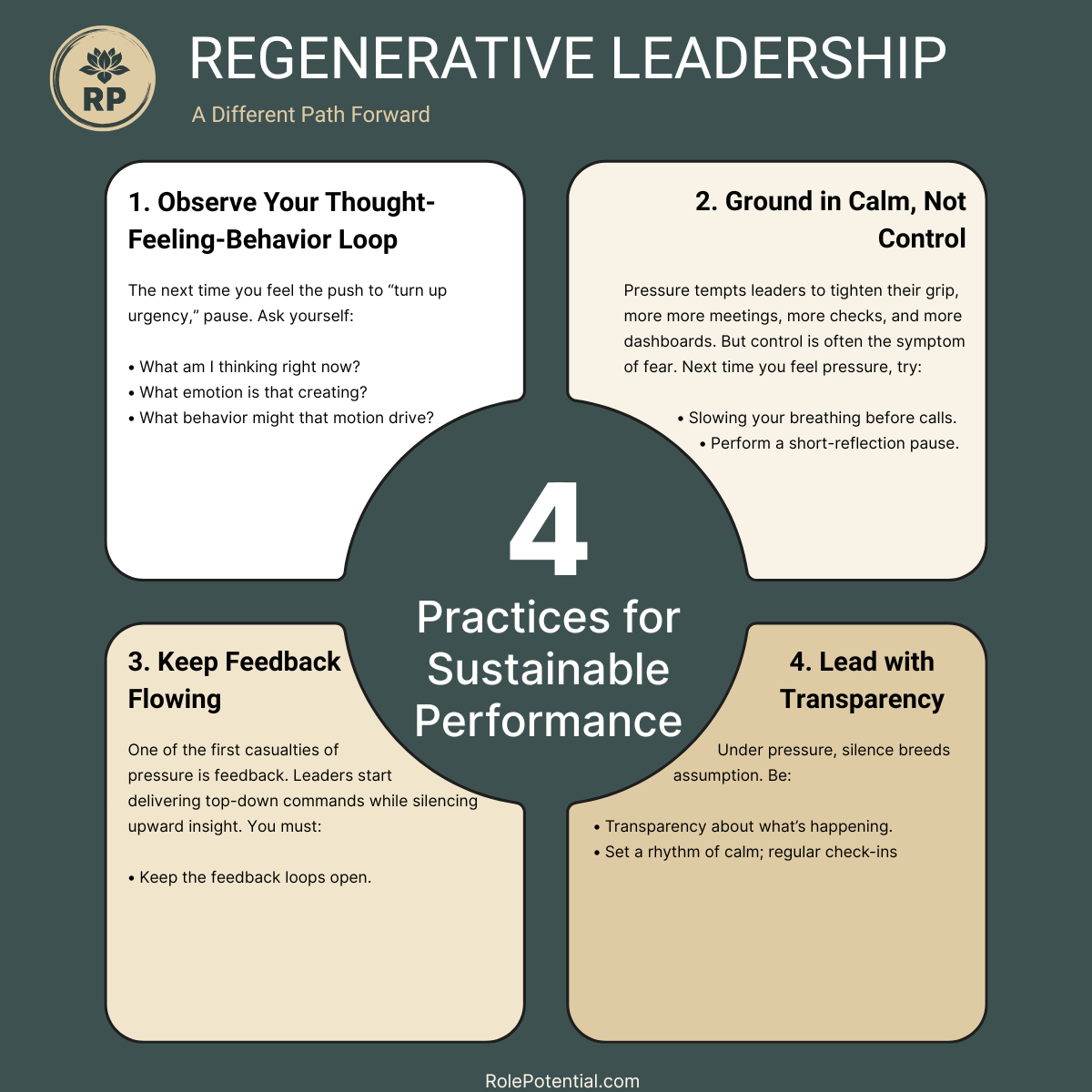
Sales doesn’t just live with pressure, it runs on it. Quarter ends. Pipeline meetings. Targets moving faster than people can catch up. Urgency isn’t the problem. The problem is what happens when urgency starts running the system.
For sales leaders, pressure from above is often non-negotiable. But what matters most is how it moves through you, and whether it shapes your thoughts, feelings, and behaviors more than your principles do. That’s the difference between reactive leadership and regenerative leadership.
Sales is one of the few fields where urgency is institutionalized. Every conversation carries a timestamp; this week, this quarter, this deal. Pressure isn’t inherently negative; it can sharpen focus and drive momentum. But when it goes unprocessed, it spills into culture as anxiety, short-termism, and silence.
Sales leaders try to shield their teams from it, to take the brunt of the top-down stress, but no matter how strong the filter, pressure leaks through. The real work isn’t just protecting others; it’s protecting your own internal state. Because when leaders lose their center, teams lose their rhythm.
Under high stress, sales leaders often fall into a predictable cascade:

This loop tightens until the entire team mirrors the leader’s tension. What began as “urgency” becomes chronic stress, performance narrows, creativity declines, and safety erodes. The goal isn’t to eliminate urgency, it’s to break the loop.
Many sales leaders equate pressure with performance, as if being under constant strain is proof of commitment. But living in that mode is like keeping the accelerator pressed with no pause for traction.
Eventually, you lose control. When urgency becomes identity, leaders start reacting instead of responding:
And that’s how culture breaks, not from bad numbers, but from unregulated emotion at the top.
Leadership isn’t about shielding your team from all pressure; it’s about metabolizing it first. You can’t stop the storm, but you can stop it from becoming your tone. Pressure only becomes toxic when it moves through you unchecked. Regenerative leadership means catching it at the gate, noticing how it’s shaping your internal state before it shapes your external behavior.

The next time you feel the push to “turn up urgency,” pause. Ask yourself:
“What am I thinking right now?”
“What emotion is that creating?”
“What behavior might that emotion drive?”
Naming the loop weakens its control.
Awareness creates distance, and distance creates choice.
Pressure tempts leaders to tighten their grip, more meetings, more checks, more dashboards. But control is often the symptom of fear. Grounding practices, slow breathing before calls, short reflection pauses, deliberate tone resets, restore composure faster than any control measure. A calm leader stabilizes the room more effectively than a forceful one.
One of the first casualties of pressure is feedback. Leaders start delivering top-down commands while silencing upward insight. Keep the feedback loops open, even when anxious. When everyone’s voice has space, energy circulates, and collective intelligence rises. Remember: control restricts flow; reflection restores it.
Under pressure, silence breeds assumption. Be transparent about what’s happening; “Yes, targets are tight. Here’s what we can control, and here’s what we’ll do together.”
Set a rhythm of calm: regular check-ins, realistic pacing, consistent tone. Rhythm is what replaces panic with predictability.
The real measure of sales leadership isn’t how well you perform when things go right, it’s how clearly you think when pressure peaks. Sustainable sales performance isn’t just built on process and product; it’s built on presence. The strongest leaders don’t suppress pressure or offload it, they transform it. They stay centered enough to keep the system steady.
Because when you stop letting urgency control your thoughts, feelings, and behaviors, you stop transmitting panic, and start transmitting trust.
Your high-performing sales team starts here.